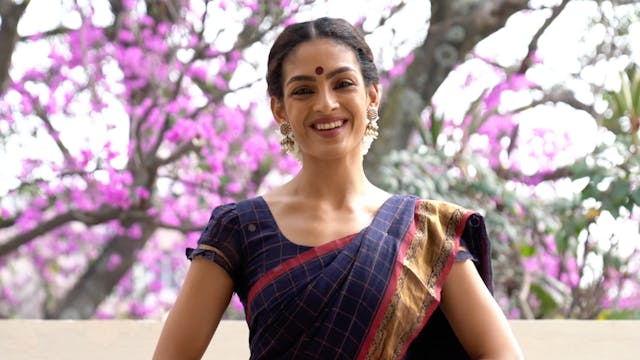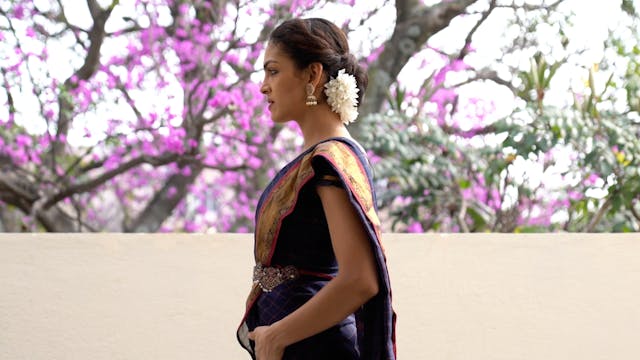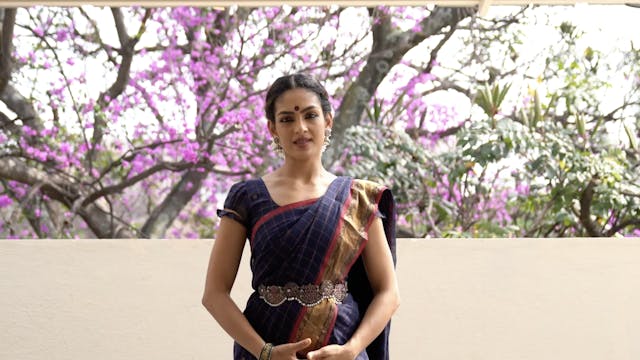The soles of the feet are considered one of the Upāngas, or minor limbs.
The movements are used not only for the precise control in the execution of Nritta but also to communicate meaning in the context of gesture.
Please refer to the Shloka below for pronunciation. Please note that the separate movements of the head when put together in a Shloka form 'Sandhis', or compound words in the Sanskrit language. Words like 'ca', 'thatha', mean "and", "also". The separate words for each movement are also given below the shloka.
Patitāgramca udvrtāgram bhūmilagnam matōdvrttam
Kuñcitamadhyam tirascināmiti śodatalam vidhuhu
Up Next in Natyashastra: Angas & Upangas
-
Udara bheda Introduction
Introduction to the uses of the stomach.
-
Udara bheda Shloka
The stomach is considered one of the Upāngas, or minor limbs.
The movements are used primarily to communicate meaning in the context of gesture.
Please refer to the Shloka below for pronunciation. Please note that the separate movements of the head when put together in a Shloka form 'Sandhis', ...
-
Bāhu bheda Introduction
The arms considered one of the Upāngas, or minor limbs, has many movement possibilities enumerated in the Natyasāstra.
The movements are used primarily to communicate meaning in the context of gesture and also clear articulation in dance or nritta.


